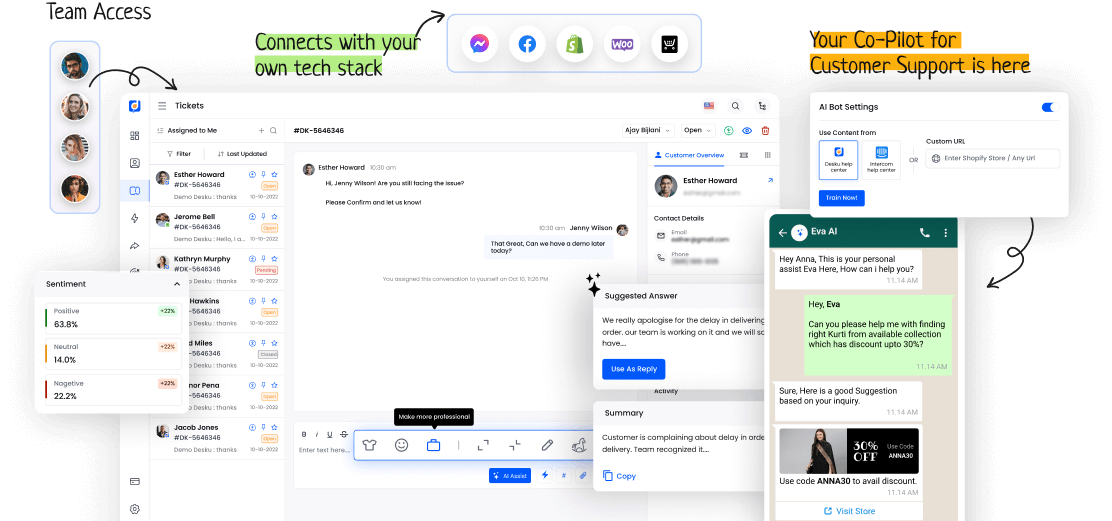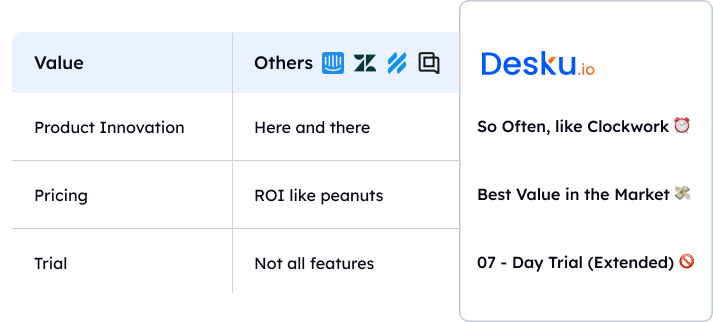What Is A/B Testing?
Running an online store and considering changing the color of your ‘Buy Now’ button for potentially higher sales? A/B testing can help you determine the impact.
To conduct an effective A/B test, you need to compare two versions of your button to see which performs better. This method helps you make informed decisions in your marketing strategies.
Let’s explore the world of A/B testing, its importance in enhancing user experiences, and increasing conversions.
Key Takeaways
- When comparing two versions, we determine which one performs better.
- We study how users interact with the website and how many of them take desired actions.
- Audiences are divided to ensure the results are reliable.
- By improving conversion rates and user engagement, we enhance the website’s effectiveness.
- Our decisions on website optimization are based on data analysis.
A/B Testing Introduction
A/B testing, also called split testing, is a method used to compare two versions of a webpage or app screen to determine which one performs better. This technique is crucial for analyzing user experience and conversion rates, relying on controlled experiments to make data-driven decisions.
Definition
A crucial part of A/B testing is its method of comparing two versions to determine which one performs better in a controlled experiment.
A/B testing involves testing two different versions (A and B) to see which one users prefer for optimizing a website.
The main aim is to make decisions based on data by analyzing results that are statistically significant.
This approach helps in improving campaigns and increasing conversion rates by continuously testing and refining different elements.
Role in Marketing and Website Optimization
A method called A/B testing is used to refine marketing strategies and improve website performance by making decisions based on data.
- Enhancing Conversion Rate Optimization (CRO)
- Analyzing user behavior with split testing
- Improving website elements for better performance
- Adjusting marketing strategies using test results
- Understanding user preferences through A/B testing
Understanding A/B Testing
To conduct effective A/B experiments, it’s important to test key elements to make informed decisions and improve outcomes. A/B testing involves dividing audiences to compare variations and aiming for statistical significance. By using this method to analyze visitor behavior, you can work towards enhancing conversion rates and optimizing your website.
The following table outlines common elements tested in A/B experiments:
- Copy: Testing different text variations, like headlines.
- Design and Layout: Experimenting with the overall look and arrangement of the website.
- Forms: Testing different formats and fields in forms.
- Social Proof: Examining the impact of social proof elements on user behavior.
- Call-to-action: Testing different prompts to encourage user actions.
- Navigation: Optimizing the website’s navigation for better user experience.
- Content Depth: Testing how the depth and length of content affect user engagement.
Testing Process
During A/B testing, data is gathered from analytics tools to pinpoint areas that can be improved.
Tests are conducted to make predictions about enhancements.
A/B testing software is used to set up experiments.
Results are examined to enhance user experience.
Changes are implemented based on test results.
Testing is done continuously to ensure ongoing enhancements.
Key Components
A fundamental aspect of A/B testing involves comparing two versions, labeled as A and B, to evaluate their performance in user engagement and enhance outcomes through data-driven decisions. This method is designed to pinpoint statistically significant enhancements, elevate Conversion Rate Optimization (CRO), and harmonize with user preferences.
Control Group
The control group is a crucial element in A/B testing.
It serves as a stable reference point for comparison and evaluation, enabling the measurement of the impact of changes.
By ensuring accurate attribution of improvements, it allows for the assessment of the effectiveness of modifications.
Without a control group, obtaining meaningful results in A/B testing would be challenging.
Test Group
In A/B testing, selecting audience segments randomly is crucial. This process involves assigning individuals to different groups to compare the impact of content variations.
The test group is vital for measuring user behavior and performance metrics. By studying how the test group responds to different content changes, valuable insights are gathered. These insights help optimize marketing strategies and improve user experiences.
Variables
When conducting A/B testing, various elements such as headlines, images, and CTAs are examined to understand their impact on marketing strategies and user experiences.
These elements play a crucial role in the testing process, helping to make informed decisions based on data.
The performance of these variables directly influences the optimization of user experience and conversion rates.
A/B Testing Advantages
When using A/B testing, marketers can analyze data to improve user engagement and conversion rates.
This method involves testing different elements on a website to enhance the user experience and boost conversion rates.
Boosted Conversion Rates
Implementing A/B testing strategies has been highly successful in significantly increasing conversion rates for businesses. This method involves making small changes to elements on a website or in marketing materials and comparing the results to make data-driven decisions.
As a result, businesses have seen notable improvements in their conversion rates, leading to direct impacts on revenue growth. Even minor adjustments have been shown to have a substantial effect on the overall success of a business.
Data-driven Decisions
Utilize A/B testing to make data-driven decisions and optimize your marketing strategies effectively.
By analyzing user behavior using statistical analysis, A/B testing helps to precisely optimize campaigns for your target audience.
This method allows businesses to make informed choices based on actual data, ensuring that marketing decisions align well with the audience.
Implementing A/B testing results in strategic adjustments that can significantly improve outcomes and performance.
Insight into Customer Preferences
Businesses use A/B testing to compare different versions of a webpage or app screen, gaining insights into customer preferences. This involves analyzing how users interact with various elements, identifying favored design layouts, and enhancing user experience based on gathered data.
A/B Testing Best Practices
Businesses can enhance their understanding of customer preferences and improve user experience through effective A/B testing practices. Segregating A/B tests for specific visitor groups provides valuable insights and optimization chances.
It’s important to avoid cloaking during A/B testing to maintain search result rankings. Using rel=canonical tags in split tests ensures proper indexing.
Adhering to Google’s guidelines and employing tools like Google Analytics are crucial for successful website optimization and increasing the efficacy of call-to-action (CTA) elements.
Setting Objectives and Hypotheses
A/B testing requires clearly defined and measurable objectives to guide the experiment and predict the expected outcomes. Objectives give the test a clear direction.
Hypotheses are educated guesses about user behavior and performance metrics. They help validate the effectiveness of any changes made.
Well-defined objectives ensure purposeful testing. Measurable results are achieved through these clear objectives and hypotheses.
Testing One Variable at a Time
When conducting A/B testing, it’s essential to isolate and test one variable at a time. This approach helps accurately assess the impact of the variable on user behavior, allowing for informed decisions to optimize marketing strategies.
Using Statistical Significance in Interpretation
Understanding statistical significance is crucial when interpreting A/B testing results. It helps us determine the likelihood that observed differences aren’t random. Statistical significance aids in making well-informed decisions based on test outcomes and confirms that any changes observed aren’t simply due to chance fluctuations.
Typically, a 95% confidence level is used to establish significance, ensuring reliable data-driven decisions. By relying on statistical significance, we can avoid making changes based on random luck, leading to more reliable and effective decision-making processes.
A/B Testing Success Stories
A/B testing success stories demonstrate how companies such as Amazon, Google, and Netflix have significantly increased their conversion rates through data-driven experimentation.
Amazon, for instance, boosted its revenue by 29% by conducting A/B tests on product pages.
Meanwhile, Google experienced a 20% rise in user engagement by refining the design of search results.
Similarly, Netflix enhanced user retention by experimenting with various homepage layouts.
These examples highlight the impactful outcomes achievable through A/B testing.
Beneficial Case Studies
Analyzing successful case studies demonstrates the practical effects of A/B testing on important performance indicators for different businesses.
- Email click-through rates saw a 20% increase with A/B testing.
- Changing call-to-action buttons led to a 15% rise in conversion rates.
- Testing website navigation elements resulted in a 25% decrease in bounce rates.
- Ad performance was optimized by 30% through testing varied ad copy.
- Sign-up rates increased by 18% by experimenting with form length and fields.
Practical Strategy Implementations
A/B testing involves making changes to webpages or app screens to measure user engagement and improve performance. By comparing different versions and analyzing conversion rates with statistical methods, website optimization becomes more data-driven.
Understanding how users interact with digital assets helps in making informed decisions for enhancement. A systematic A/B testing approach ensures ongoing improvement and measurable outcomes in website performance and user engagement.











